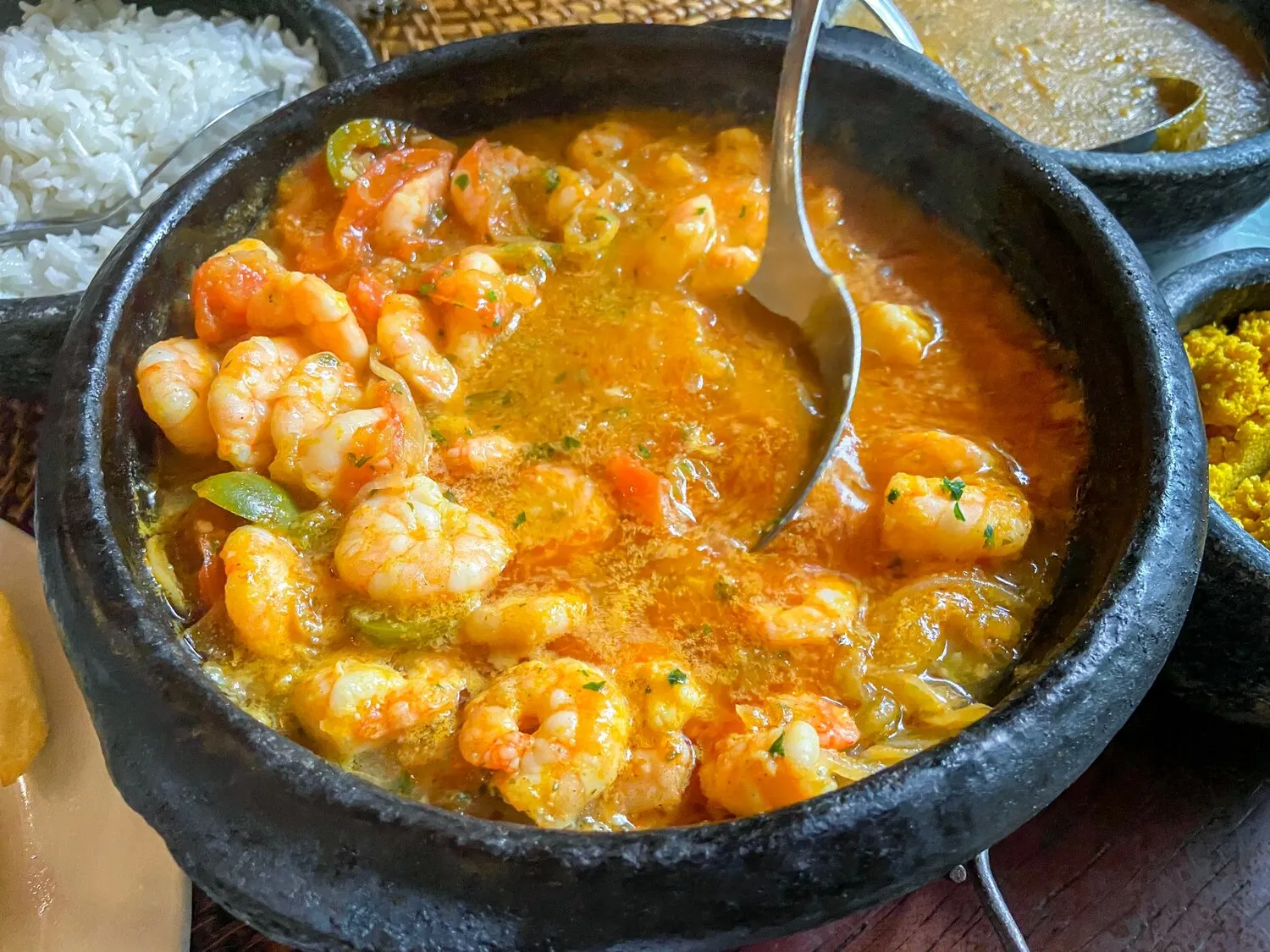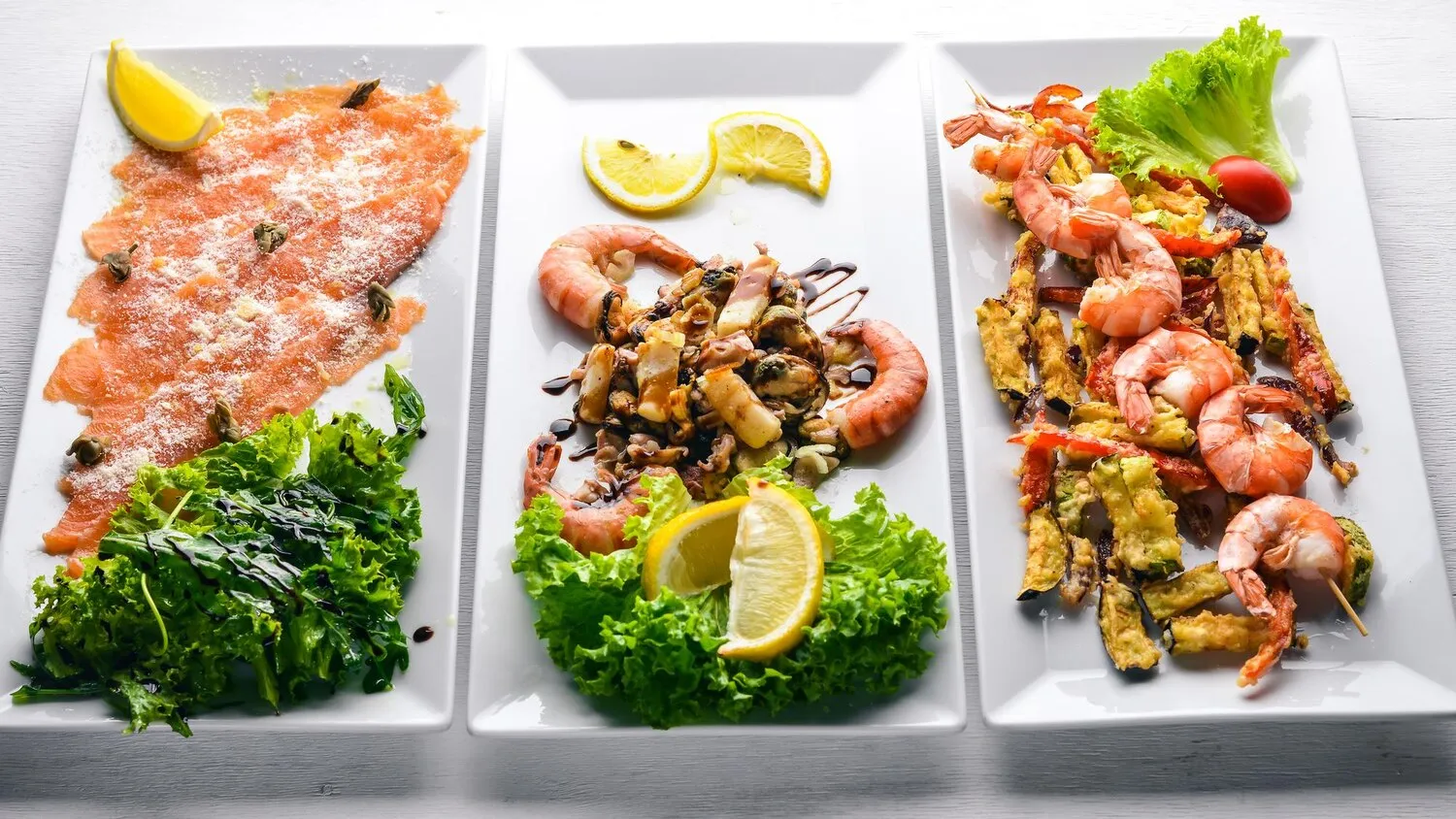
Moqueca de Camarão
Shrimp stew cooked in coconut milk, palm oil, tomatoes, onions, and peppers. A very traditional Brazilian seafood dish.
Nutrition Facts
* The % Daily Value (DV) tells you how much a nutrient in a serving of food contributes to a daily diet. 2,000 calories a day is used for general nutrition advice.
Moqueca's history is deeply intertwined with Brazil's colonial past. It evolved from indigenous cooking techniques, utilizing local seafood and vegetables cooked in clay pots. African influences, particularly coconut milk and palm oil (dendê oil), were incorporated during the slave trade, enriching the dish with new flavors and textures. European influences also played a part in the use of tomatoes, onions and peppers.
Moqueca is more than just a dish; it represents the cultural heritage and culinary traditions of Brazil, particularly the coastal regions. It's often associated with family gatherings, celebrations, and a sense of community. The preparation of moqueca is often a shared activity, passed down through generations.
Regional Variations
There are two main types of Moqueca: Moqueca Capixaba (from Espírito Santo) and Moqueca Baiana (from Bahia). Moqueca Capixaba does NOT use dendê oil or coconut milk, while Moqueca Baiana does, making it richer and more flavorful. This difference reflects the distinct culinary influences of each region.
Symbolism
The use of clay pots in traditional moqueca preparation connects the dish to indigenous traditions and represents a respect for natural ingredients and cooking methods. The vibrant colors of the dish, especially the orange hue from dendê oil, reflect the vibrant culture and landscapes of Brazil.
Social Gatherings
Moqueca is frequently served at festive occasions and family reunions, promoting togetherness and a shared cultural experience. Its preparation often involves multiple family members, contributing to a sense of tradition and heritage.
Moqueca de Camarão is characterized by a rich, savory, and slightly sweet flavor profile, balanced by the umami of the shrimp and the subtle heat of chili peppers. The dish is aromatic and comforting, with distinct notes of coconut and seafood.
The primary flavor component comes from the fresh shrimp, providing a sweet and briny foundation. Coconut milk lends a creamy texture and a subtle sweetness that complements the seafood. Palm oil (dendê oil) contributes a unique, earthy, and slightly smoky flavor, as well as a vibrant orange color. Tomatoes, onions, and bell peppers create a savory base, while cilantro and lime juice add freshness and acidity. Malagueta peppers or other chili peppers provide a touch of heat, balancing the richness of the dish. The combination of these elements creates a complex and harmonious blend of flavors.
Fresh Ingredients are Key
Use the freshest shrimp possible. Look for firm, translucent shrimp with a clean, sea-like smell. Similarly, use ripe, juicy tomatoes and fresh herbs to maximize flavor.
Proper Cooking Techniques
Avoid overcooking the shrimp, as it can become rubbery. Add the shrimp towards the end of the cooking process and cook until they turn pink and opaque. Simmer gently, and avoid stirring too vigorously to prevent breaking the shrimp.
Quality Palm Oil
Use high-quality dendê oil for the most authentic flavor. Be mindful that dendê oil can stain, so use caution when handling it. Taste the dendê oil before using it in the moqueca. Low quality oil can have a rancid taste and ruin the entire dish.
Clay Pot Advantage
While not essential, cooking moqueca in a traditional clay pot enhances the flavor and keeps the dish warm for longer. If using a clay pot, season it properly before first use.
Explore additional Brazilian seafood dishes and restaurants
Explore Brazilian seafoodDiscover top dining spots and culinary experiences in Maceió.
Explore MaceióLearn more about the food culture, restaurant scene, and culinary heritage of Brazil.
Explore Brazil